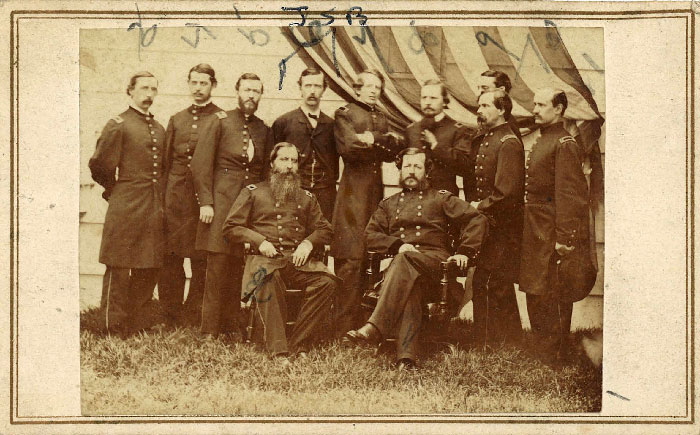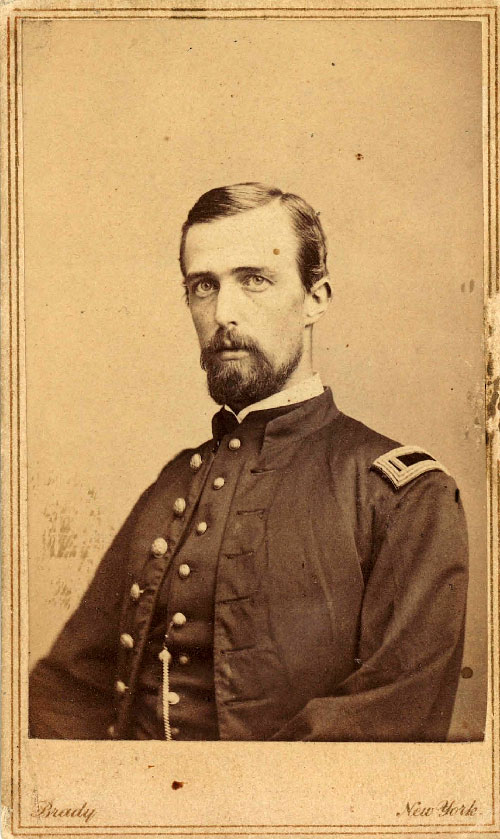John Shaw Billings, MD A Giant in Medicine, Military and Libraries
John Shaw Billings, MD
A Giant in Medicine, Military and Libraries
By Richard Puff

The term “Renaissance Man” is a much overused phrase that attempts to describe someone proficient at a number of things. So few truly reach the preeminence of this descriptor, yet one University of Cincinnati College of Medicine graduate might.
Few have heard of John Shaw Billings, MD. But this 1860 graduate of the Medical College of Ohio – the forerunner of today’s UC College of Medicine – was a giant in medicine, military and libraries.
Billings played important roles in Civil War medicine, the National Medical Library, Johns Hopkins Hospital, the United State Public Health Service, Index Medicus, the New York Public Library and Peter Bent Brigham Hospital, among many others. And except for one building in Baltimore which bears his name, not many remember his extensive contributions which have made him arguably the most illustrious alumnus of the UC College of Medicine.
Born in 1838 in Switzerland County, Indiana, Billings graduated from Miami University in 1857 and enrolled in the Medical College of Ohio in the fall of 1858. He later recalled subsisting mostly on a diet of eggs and milk and spent most of his time with his textbooks rather than attending lectures because he felt he could learn more that way. He showed special aptitude in the anatomy rooms and, following graduation in March 1860, joined the medical school’s faculty as a demonstrator of anatomy.
In the fall of 1861, Billings traveled to Washington, DC, to take the three-day test for appointment as an assistant surgeon in the U.S. Army. He finished first in the examination and soon was heading military hospitals in Washington, DC, and Philadelphia. Billings later participated in the Battles of Chancellorsville and Gettysburg, treating hundreds of wounded soldiers at times so close to the front lines that bullets whizzed by him. By 1864 Billings was serving as a medical inspector for the Army of the Potomac, responsible for ambulances and medical supplies while also collecting patient statistics, supervising the collection of pathological specimens and occasionally operating on difficult cases.
In the fall of 1865 Billings was placed in charge of the Library of the Surgeon General. At the time the library contained just 1,800 books and pamphlets. When he left military service in 1895, Billings had grown the library to more than 308,000 volumes making it one of the greatest medical libraries in the world. For 20 years beginning in 1867, the library was located on the second floor of what had been Ford’s Theater in Washington, DC, site of President Abraham Lincoln’s assassination on April 14, 1865. The building was purchased in 1866 by the government to store military documents and material of the Museum of the Medical and Surgical Department of the Army. In 1956 the library’s name was changed to the National Medical Library.
During his 30 years in the Surgeon General’s office, Billings marked numerous achievements. In 1869 he reviewed the country’s 27 Marine hospitals and his report and recommendations paved the way for the network of hospitals to evolve into today’s U.S. Public Health Service. In 1874 he issued a landmark three-volume catalog of more than 50,000 titles of books, pamphlets, articles and theses held by the Surgeon General’s Library making it the first catalog of medical literature. The idea for a work of this type was germinated while he was a student at the Medical College of Ohio. While preparing his thesis Billings used sources from 51 authors, most of which were not available to him in Cincinnati. The effort to locate so much source material no doubt fostered his desire to create a catalog that would provide monumental assistance for physicians and researchers. In 1879 he began publishing monthly supplements called Index Medicus cataloging current medical literature. The following year he would publish the first of the 16-volume Index Catalog.
Billings also was an expert on the design and construction of hospitals. In 1878 his initial plans were accepted for the design of the Johns Hopkins Hospital. Billings would oversee construction of the hospital, which opened in 1889. His portrait hangs in the famed hospital’s rotunda, and the structure is appropriately named the Billings Administration Building. Shortly after the turn of the century, Billings would plan Peter Bent Brigham Hospital in Boston.
Billings was internationally known as a physician, medical librarian, public health innovator, educator and researcher. He advocated for changes in pre-, undergraduate and graduate medical education that are today standards of medical education. He participated in the 1880 and 1890 US Censuses and his work in vital statistics resulted in the creation of biostatistics as a science.
He retired from the Army in 1895 and became the first director of the Institute of Hygiene at the University of Pennsylvania. That appointment lasted less than a year as in 1896 Billings was selected as the first director of the New York Public Library. He is credited with pulling together that city’s Lenox, Astor and Tilden libraries into a single library system and encouraging Andrew Carnegie to donate more than $5 million – valued at more than $140 million in today’s dollars -- for the construction of 65 branch libraries in New York City. Billings also helped plan and led the construction of the library’s famed main branch on West Fortieth Street.
Billings died in 1913 and is buried in Arlington National Cemetery.


